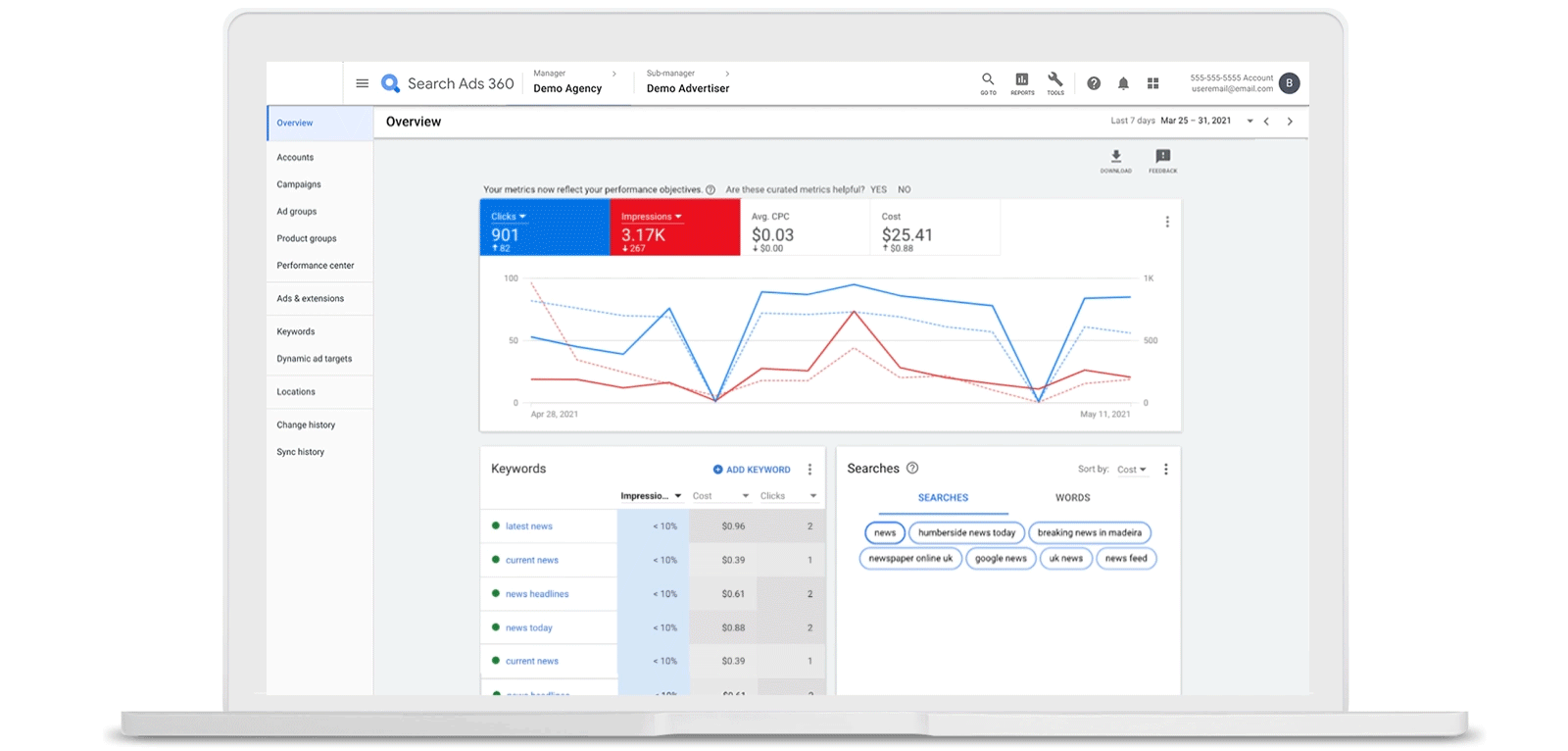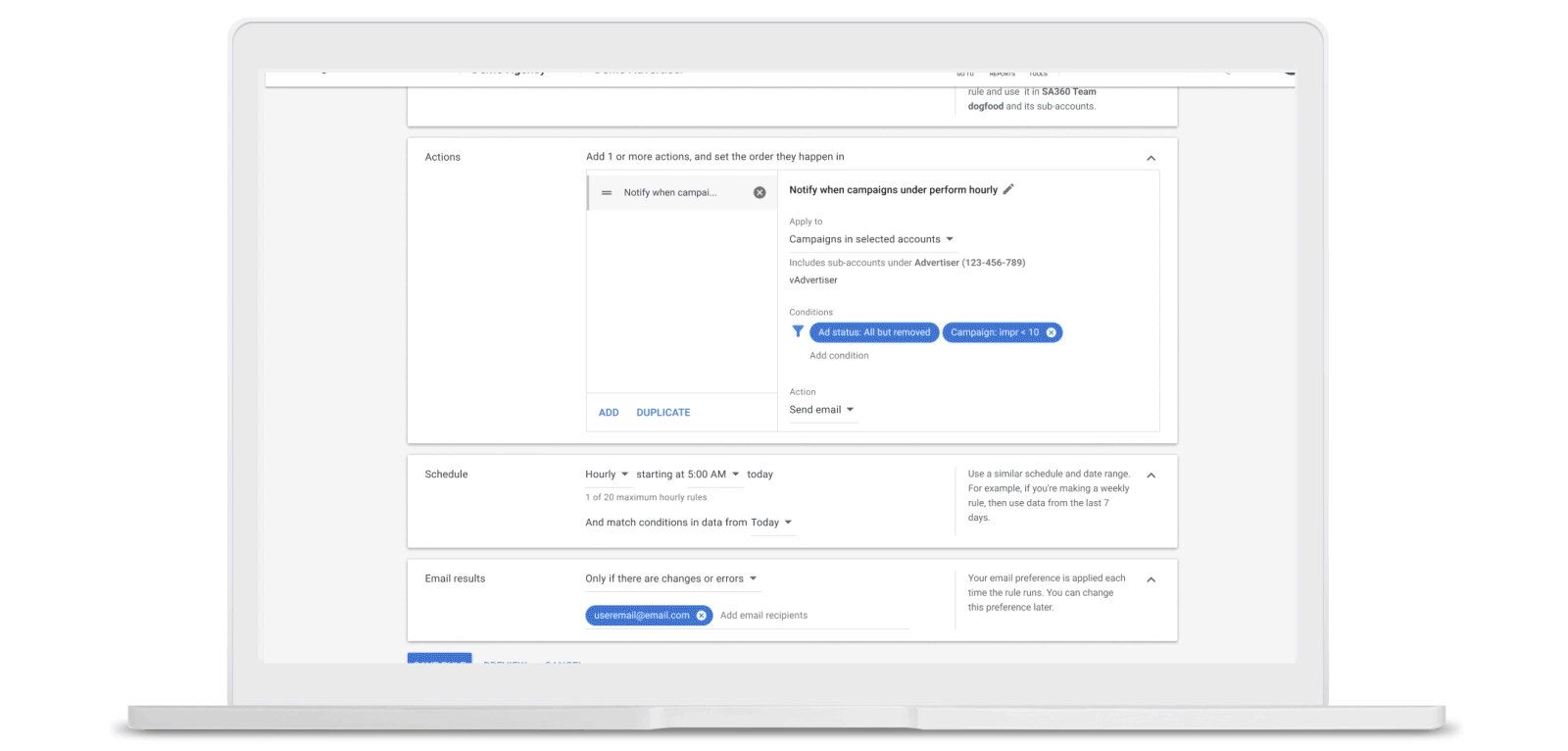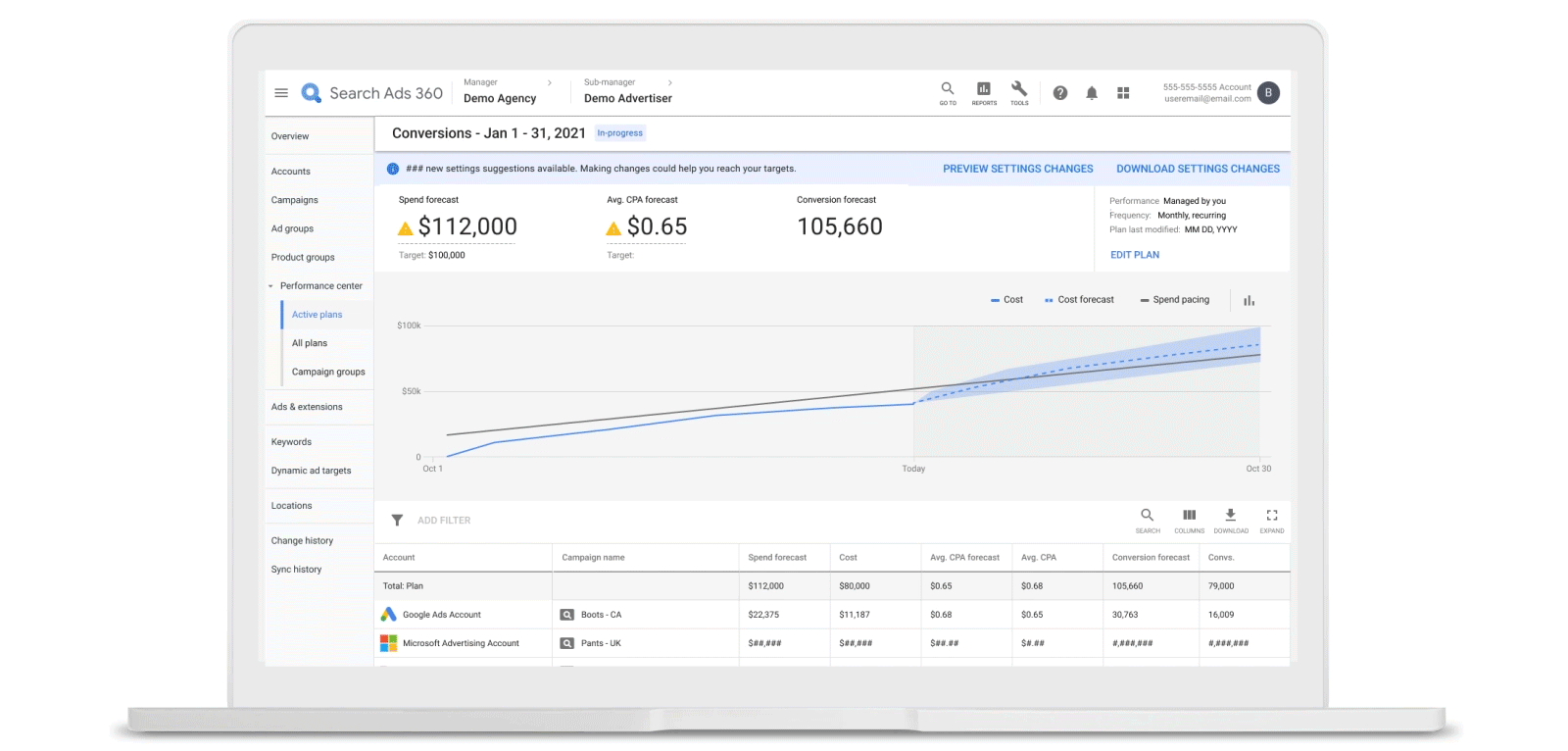A lot has changed since Search Ads 360 was developed more than ten years ago. The ways people search and the expectations for the ads they see have evolved and expanded. As a result, advertisers are managing more complexity than ever before and turn to platforms like Search Ads 360 to simplify campaign management, measure performance and grow their business.
Today we’re introducing the new Search Ads 360 to help advertisers be ready for what’s next. We’re making the platform easier to use with a new user interface, and adding support for more search engine features and campaign types based on feedback from advertisers who told us they want an easier and more convenient way to build campaigns across advertising platforms. You’ll now have immediate support for most new Google Ads features and improved support for other channels and search engines, like Microsoft Advertising and Yahoo! Japan. We’ve also built new enterprise features that are only available in the new Search Ads 360 which will give you new ways to centralize and scale your day-to-day tasks across engines and accounts. As a result, now you’ll be able to get more of your work done from one place, which will save you time and help you drive better results.
Rebuilt on a Proven Platform
In order to help advertisers keep up with today’s demands, we redesigned and rebuilt Search Ads 360 using the same technology that powers Google Ads.
With this new common technology in place, the new Search Ads 360 will be able to manage and process more data than ever before — while still conforming to strict latency guidelines to deliver a fast user experience — which will unlock new enterprise innovations to help you centralize and scale your work. Second, it’ll offer immediate management support for most new features in Google Ads like Performance Max and Discovery campaigns.
It’s a total game-changer that most Google Ads content is now available for management. This not only extends productivity and automation, but unlocks the ability to activate things like Value Based Bidding in a way that was never before possible.
Let’s take a look at some of the key changes in the new Search Ads 360.
New Look, Faster Navigation
The refreshed look and feel of Search Ads 360 introduces a familiar user experience that closely resembles search engine tools like Google Ads and Microsoft Advertising — platforms that many Search Ads 360 users are familiar with — making navigation faster and easier for enterprise marketers to manage campaigns and drive performance.
I found the new simplified user interface easier to navigate and use. The new budget forecasting capabilities, reporting features, and reduced complexity allowed me to streamline workflows and minimize my workload by at least 20% last month.*

The new Search Ads 360 interface
Improved Search Engine Support
With a more modern infrastructure, the new Search Ads 360 is also able to offer better support across multiple advertising channels and search engines, including third-party partners. This means advertisers can access more features from other search engines than ever before. For example, the new Search Ads 360 introduces support for a number of new Yahoo! Japan features, like Dynamic Ads For Search and sitelink extension scheduling, as well as over ten additional Microsoft Advertising features including responsive search ads, call extensions, local inventory ads and additional Microsoft audience types like customer match.
The new user interface in Search Ads 360 help Media.Monks account teams identify optimization opportunities on a more streamlined basis. In fact, since we started using the new experience, the team is saving 2-3 hours per week.
This added support will enable less task switching between advertising platforms so you can focus on getting more of your work done all in one place. We’ll continue to add more features and channel support in the coming quarters, and we encourage you to continue sharing feedback on what you’d like to see added.
Advanced Enterprise Innovations
We’ve also added a number of features unique to the new Search Ads 360. For instance, the new Search Ads 360 takes enterprise workflows to the next level by giving you new ways to centralize and scale your day-to-day tasks and key activities — like campaign management, automated rules and labels — and you'll now be able to make these changes across multiple advertisers at the same time.
"The new Search Ads 360 has unlocked value for our team: from the ability to manage new extensions for Google Ads and Microsoft Advertising, to cross-engine performance overviews, and editing campaigns from multiple accounts in a unified and familiar interface. All of these improvements have enabled us to manage paid search much more easily."
—Rodrigo Pozos, SEM Manager, Aeromexico

Automated rules builder in the new Search Ads 360
Current Search Ads 360 customers use automated campaign building features like inventory management and ad builder to efficiently manage their marketing at scale. In the new Search Ads 360 these will become a single unified feature called “Templates.” We expect this to become available later this year, at which point you’ll be able to activate business data across client accounts to automatically build and update your ads at scale using your own data feed.
Another great feature in the new Search Ads 360 is “Performance Center” — an improvement to budget management — that will take you beyond simply managing budgets. We expect this to become fully available later this year, at which point you’ll be able to incorporate enterprise planning capabilities like improved forecasting across search engines where you can explore different hypothetical scenarios to plan your media budgets.

Performance Center in the new Search Ads 360
If you’d like to learn more about these and other new features in the new Search Ads 360, please reach out to your account representative or contact the support team.
The Road Ahead
This is an exciting new chapter for Search Ads 360 that paves the way for the next generation of enterprise innovations to optimize workflows and help you maximize performance. We look forward to building the future of enterprise Search together, and we encourage you to share your feedback so we can continue improving Search Ads 360.
Over the next couple of months, current Search Ads 360 users can expect to start gaining access to the new Search Ads 360. To get started, we recommend diving into the new Skillshop learning pathGet Started with Search Ads 360 for an in depth overview.
*Individual results may vary
